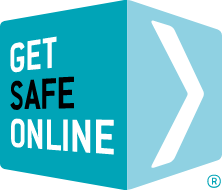So QR codes are very convenient, but using them can expose you a number of risks … mainly due to the fact that unlike a written web address, a QR code cannot be read by the human eye. Therefore you have no idea what website you are actually visiting from looking at the code.
The risks
The fact that QR codes are not eye-readable increases the chance that you will be directed to a fraudulent website. Even if the QR code is printed on an advertiser’s poster in the street or magazine advertisement, an alternative code could have been substituted by fraudsters for the authentic one.
You could be directed to visit a fraudulent website where you disclose personal or financial information, be exposed to inappropriate material or pick up a virus.
Use QR codes safely
- Ensure that any QR code reader app that you download is from a reputable source.
- Where possible, and especially in public places, check for visual indications that a QR code has not been tampered with (for example with an oversticker).
- Never enter personal or financial information on a website to which you have been directed from a QR code.
- If downloading security software for your smartphone or tablet, choose one which has a built-in QR code scanner.
Some commonly-available QR code readers include the ability to check the authenticity and safety of destination websites.
